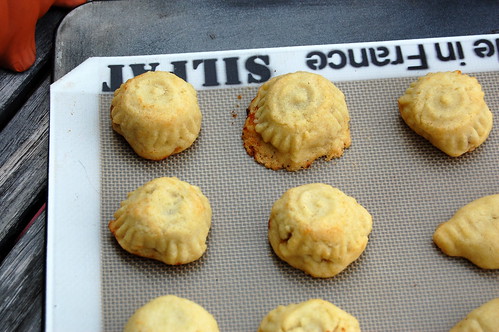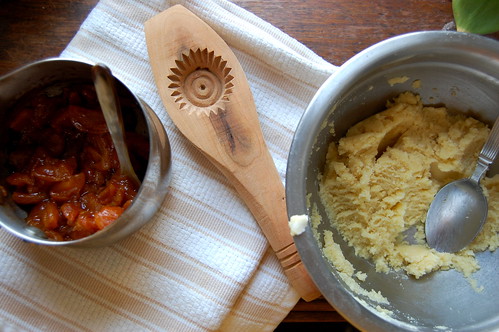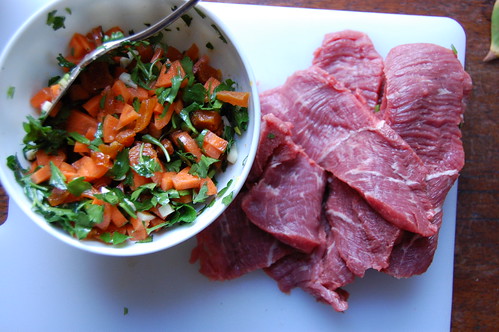
Yes indeed, today's recipe really is called "tasty beef rolls." I'm sure it has a real name, but the family that taught me to make this dish called it that, so that's what I call it too.
But first, I want to talk about the Italian-Syrian connection. Between 828 and the early 1700's Italy, specifically Venice, acted as a bridge between the East and West. A robust trading relationship existed, with trade with the Mamluk empire (at that time ruling Damascus and Egypt) counting for 45% of Venetian maritime trade. The relationship is depicted in a few famous paintings, including "The Reception of the Ambassadors in Damascus," 1511. Though that relationship petered out with the rule of the Ottoman empire and the boom of the American new world, remnants of the relationship are seen throughout Syria. There's the large number of Italian students crowding the halls of University of Damascus, mortadella is one of the most popular choices for a Syrian sandwich, and many similarities are seen between traditional Syrian and Italian woodwork and other crafts.
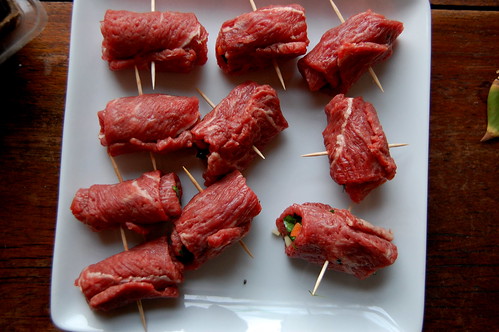
So, you won't be surprised when this dish looks a little bit Italian, it even looks like it could be a distant cousin of that Italian-American classic the braciole. I don't know the origins of this dish, heck I don't even know its real name. But it is indeed tasty (laziza, in Arabic).
Basically you take some meat, pound it out into thin little squares, and you stuff them with a mixture of garlic, herbs, really whatever you'd like. In this one I've added in some diced up dried apricots, which is traditional in some Syrian families. I also added a diced up carrot, because I felt I was needing my vegetables, which is not traditional, but I think it's a nice addition. Then you roll up the beef into little rolls. Traditionally this is tied with a needle and thread, but I just used a toothpick (easier to make and to eat!). The beef is then simmered in a simple tomato sauce until tender. Yes, it's a little tedious to make the rolls, but it's really delicious, and manages to be both hearty and light at the same time. So there you go, tasty beef rolls.
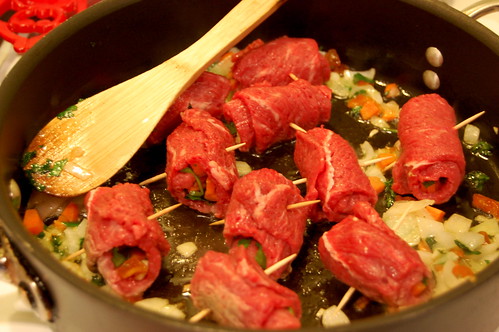
Syrian Style Beef Rolls
If using fresh tomatoes that are very watery, drain the watery seed part and use only the flesh (in which case you may need more tomatoes). You could probably do this with a different cut of beef, I've just never tried it. Also, if you have a bit of leftover filling after stuffing the rolls, you can just saute it with the onion when making the tomato sauce, as I did in the photo above.
1/2 lb sirloin steak, sliced
3 garlic cloves
1/2 cup chopped parsley
1/2 cup chopped cilantro
1/4 cup finely diced dried apricot
1 carrot, cut into very fine dice
1/4 teaspoon each cumin, allspice
juice of 1 lemon
1 onion, chopped
24 oz chopped tomatoes (fresh or canned)
olive oil, salt, and pepper to taste
1. Smash garlic in a mortar and pestle to a paste. Place garlic in a bowl with parsley, cilantro, apricot, carrot, cumin, and allspice. Season with salt and pepper. Add lemon juice and olive oil, dressing the mixture as if it were a salad.
2. With the spiky side of a meat mallet, pound out the steak squares. Place a bit of filing on each square, roll up, and secure with a toothpick. Place the rolls on a tray as you work, then sprinkle them lightly with salt.
3. Heat some olive oil in a large wide pan. Saute the chopped onion until translucent. Add the beef rolls to the pan, searing until lightly browned on all sides. Add the tomatoes and season with salt and pepper as necessary.
4. Bring to a simmer, loosely cover the pan, and let simmer for about 30 minutes. Check the pan occasionally to make sure it is not dry. Cooking time will depend on how thinly you cut the beef and how big your rolls were. The best way to test for doneness is just taste a bit of one of the rolls.
5. Serve beef with tomato sauce over rice or as desired.

